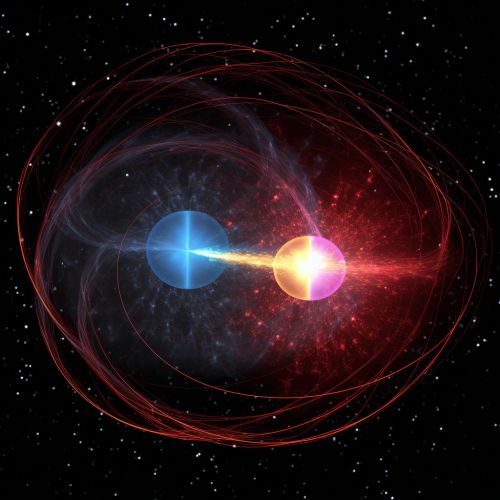Einstein-Podolsky-Rosen paradox
Introduction
The Einstein-Podolsky-Rosen paradox (EPR paradox) is a thought experiment proposed by physicists Einstein, Podolsky, and Rosen in 1935. It challenges the completeness of the description of physical reality provided by Quantum Mechanics. The paradox has been the subject of ongoing debate and research, and has profound implications for our understanding of the nature of reality and the foundations of quantum theory.


Background
The EPR paradox emerged from Einstein's dissatisfaction with the Copenhagen interpretation of quantum mechanics, which he famously criticized for its inherent randomness and lack of determinism. Einstein, Podolsky, and Rosen proposed the EPR paradox as a critique of the Copenhagen interpretation, arguing that it was incomplete and that a more complete theory would provide a deterministic description of physical reality.
The Paradox
The EPR paradox is based on two key concepts in quantum mechanics: quantum entanglement and the Heisenberg uncertainty principle. It involves a pair of particles prepared in a certain state known as an entangled state. According to the principles of quantum mechanics, the properties of these particles are not determined until they are measured. However, once one of the particles is measured, the state of the other particle is instantly determined, no matter how far apart the particles are. This phenomenon, known as quantum entanglement, appears to involve information being transmitted faster than the speed of light, which is in violation of the principles of special relativity.
The EPR paradox argues that this situation suggests that quantum mechanics is incomplete. According to Einstein, Podolsky, and Rosen, the properties of the second particle must have been determined at the time of the measurement of the first particle, implying that these properties were 'hidden' prior to the measurement. This led them to propose the concept of hidden variables, suggesting that quantum mechanics is a statistical theory that averages over these hidden variables.
Implications and Interpretations
The EPR paradox has profound implications for our understanding of the nature of reality and the foundations of quantum theory. It challenges the traditional view of reality as local and deterministic, suggesting instead that reality may be non-local and fundamentally probabilistic.
The EPR paradox has led to a number of different interpretations of quantum mechanics, including the Bohmian interpretation, the many-worlds interpretation, and the relational interpretation, each of which attempts to resolve the paradox in a different way.
Bell's Theorem and Experimental Tests
In 1964, physicist John Bell formulated a theorem, known as Bell's theorem, that provided a way to test the predictions of quantum mechanics against those of local hidden variable theories. Bell's theorem showed that certain predictions of quantum mechanics are incompatible with local hidden variable theories, and that if these predictions are confirmed by experiment, then local hidden variable theories must be rejected.
Since Bell's theorem, a number of experiments have been conducted to test the predictions of quantum mechanics against those of local hidden variable theories. These experiments, known as Bell test experiments, have consistently supported the predictions of quantum mechanics, suggesting that local hidden variable theories are not a viable solution to the EPR paradox.
Conclusion
The EPR paradox continues to be a subject of ongoing debate and research. While the results of Bell test experiments suggest that local hidden variable theories are not a viable solution to the paradox, the question of how to interpret the paradox and its implications for our understanding of the nature of reality remains open. The EPR paradox has profound implications for our understanding of the nature of reality and the foundations of quantum theory, and continues to inspire new research and debate in the field of quantum mechanics.
